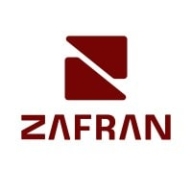


Microsoft Defender for Cloud and Qualys CyberSecurity Asset Management are competitors in the hybrid and multi-cloud security realm. Based on feature richness and integration capabilities, Microsoft Defender seems to have an upper hand, especially for Microsoft ecosystems, whereas Qualys provides superior real-time visibility and asset management.
Features: Microsoft Defender for Cloud offers robust security for hybrid and multi-cloud environments, with seamless integration with Microsoft 365 and Sentinel for unified management and regulatory compliance. Qualys CyberSecurity Asset Management specializes in excellent asset discovery, categorization, and management, providing insights into hardware and software configurations without restrictions to specific platforms. Both solutions deliver comprehensive threat protection.
Room for Improvement: Microsoft Defender for Cloud can boost automation and improve compatibility with older operating systems. It also needs better integration with non-Microsoft cloud providers and optimized resource consumption. Qualys CyberSecurity Asset Management could offer more customizable reports and enhanced third-party tool integration. It also requires improved scan frequency control in the EASM module and expanded AI capabilities.
Ease of Deployment and Customer Service: Microsoft Defender for Cloud is noted for its ease of deployment in hybrid and multi-cloud settings, though customer service experiences are mixed, sometimes requiring issue escalation. Qualys CyberSecurity Asset Management supports seamless integration with minimal direct contact needed, yet navigation could be more intuitive for novices. Customer support is generally satisfactory for both, with Microsoft having longer response times due to scale.
Pricing and ROI: Microsoft Defender for Cloud is priced per user or workload and offers flexibility, though newer features can lead to high costs. Improved pricing transparency is needed despite its ROI in security posture enhancement. Qualys CyberSecurity Asset Management, while competitively priced, may be costly for smaller firms and could benefit from bundled options to boost value. Its ROI is evident in time and efficiency savings, although its cost as an add-on to VMDR may limit wider adoption.
| Product | Market Share (%) |
|---|---|
| Microsoft Defender for Cloud | 5.2% |
| Qualys CyberSecurity Asset Management | 1.2% |
| Zafran Security | 1.0% |
| Other | 92.6% |



| Company Size | Count |
|---|---|
| Small Business | 26 |
| Midsize Enterprise | 7 |
| Large Enterprise | 45 |
| Company Size | Count |
|---|---|
| Small Business | 6 |
| Midsize Enterprise | 2 |
| Large Enterprise | 16 |
Zafran Security integrates with existing security tools to identify and mitigate vulnerabilities effectively, proving that most critical vulnerabilities are not exploitable, optimizing threat management.
Zafran Security introduces an innovative operating model for managing security threats and vulnerabilities. By leveraging the threat exposure management platform, it pinpoints and prioritizes exploitable vulnerabilities, reducing risk through immediate remediation. This platform enhances your hybrid cloud security by normalizing vulnerability signals and integrating specific IT context data, such as CVE runtime presence and internet asset reachability, into its analysis. No longer reliant on patch windows, Zafran Security allows you to manage risks actively.
What are the key features of Zafran Security?
What benefits can users expect from Zafran Security?
In industries where security is paramount, such as finance and healthcare, Zafran Security provides invaluable protection by ensuring that only exploitable vulnerabilities are addressed. It allows entities to maintain robust security measures while allocating resources efficiently, fitting seamlessly into existing security strategies.
Microsoft Defender for Cloud is a comprehensive security solution that provides advanced threat protection for cloud workloads. It offers real-time visibility into the security posture of cloud environments, enabling organizations to quickly identify and respond to potential threats. With its advanced machine learning capabilities, Microsoft Defender for Cloud can detect and block sophisticated attacks, including zero-day exploits and fileless malware.
The solution also provides automated remediation capabilities, allowing security teams to quickly and easily respond to security incidents. With Microsoft Defender for Cloud, organizations can ensure the security and compliance of their cloud workloads, while reducing the burden on their security teams.
Qualys CyberSecurity Asset Management provides advanced real-time asset visibility, dynamic tagging, and External Attack Surface Management. It streamlines asset discovery and management using cloud agents and IP-based scanning, enhancing risk management and software lifecycle tracking.
Qualys CyberSecurity Asset Management offers a comprehensive solution for managing asset inventories and tracking software lifecycle states. It facilitates network visibility and supports zero-day vulnerability solutions, enhancing security posture through efficient monitoring. Users benefit from its cloud-based interface, which provides in-depth asset configurations and insights. Key features include automated vulnerability scanning and unauthorized software management, reducing manual efforts. The platform also emphasizes the importance of timely remediation and ongoing risk mitigation across multiple environments. Despite its strengths, users note the need for enhanced integration with additional CMDBs beyond ServiceNow, as well as cost efficiency improvements. Requests also include better report customization, more scan control, and a simplified UI.
What are the key features of Qualys CyberSecurity Asset Management?In industries like finance, healthcare, and manufacturing, Qualys CyberSecurity Asset Management enhances asset control by offering visibility into hardware and software configurations. It aids in maintaining security compliance and identifying unauthorized software, crucial for sectors with strict regulatory requirements.
We monitor all Vulnerability Management reviews to prevent fraudulent reviews and keep review quality high. We do not post reviews by company employees or direct competitors. We validate each review for authenticity via cross-reference with LinkedIn, and personal follow-up with the reviewer when necessary.